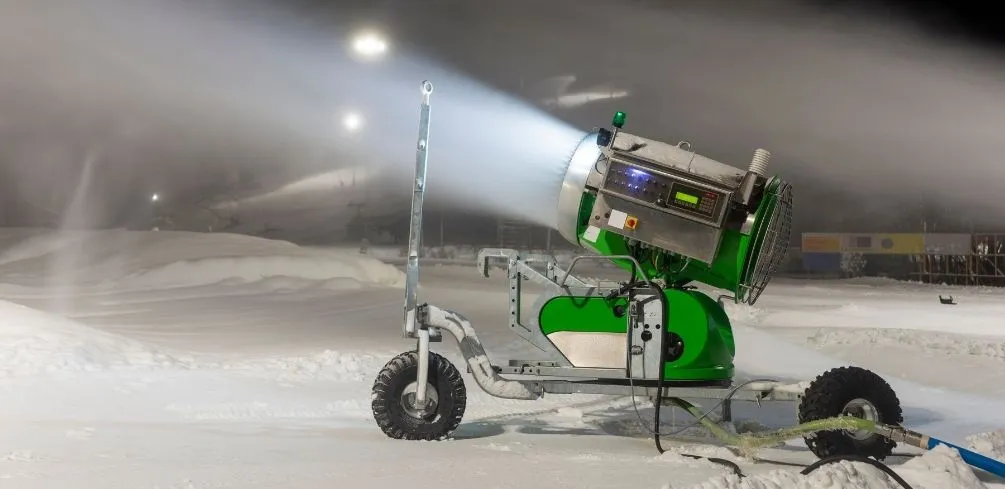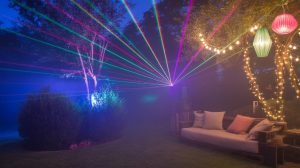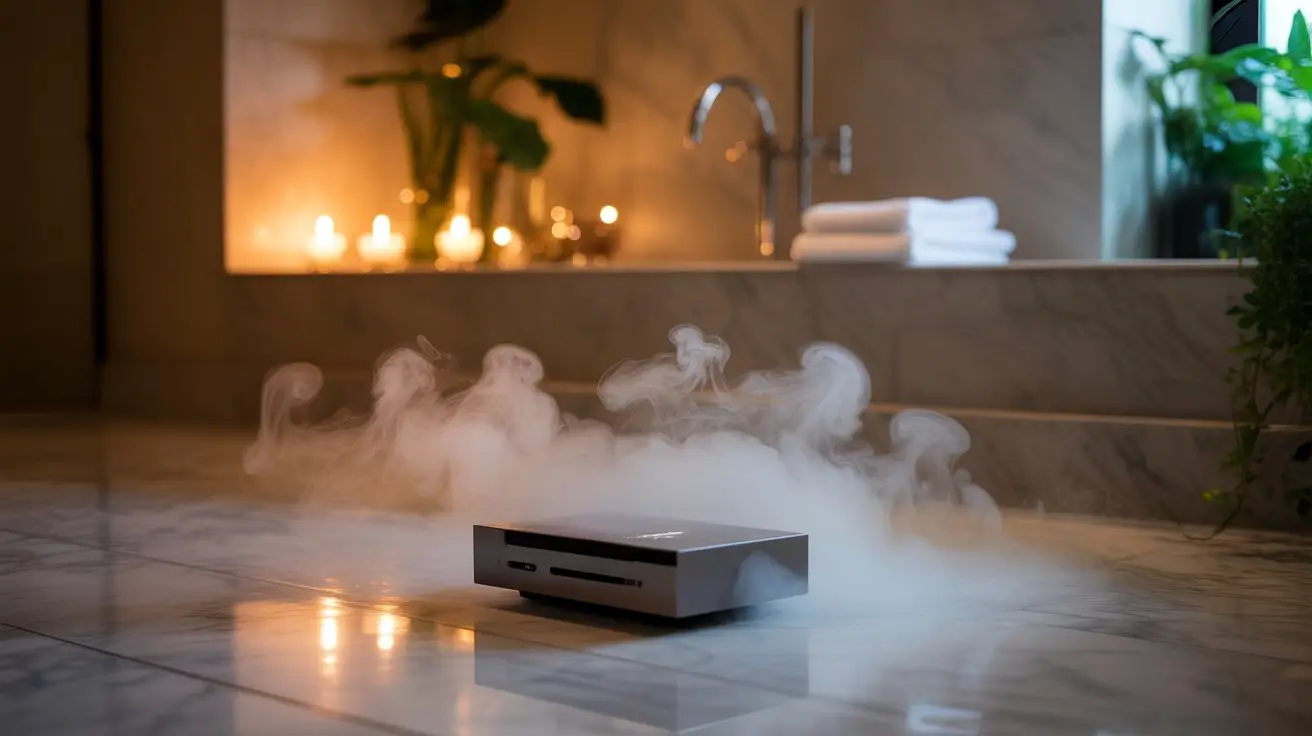Snow-making works best when the atmospheric temperature is below freezing (32 degrees Fahrenheit). Traditional snow-making machines are not designed to be used in warm weather. However, some companies have begun producing snow-making machines that can be used for warm weather.
As the temperature starts to rise, you may be wondering if you can still use your snow-making machine.
In this blog post, we will be answering the question: can you use a snow-making machine for warm weather? So stay with us through to the end to find out.
What is a Snow-making Machine?
A snow-making machine is a device that can create artificial snow. Snow-making machines are typically used in ski resorts to supplement natural snowfall and help maintain optimal conditions for skiing and other winter activities.
How Does a Snow-making Machine Work?
A snow-making machine works by taking water from a nearby source and pumping it through a hose to a nozzle. The nozzle then releases a fine mist of water into the air.
As the water droplets fall through the cold air, they turn into snowflakes.
Can You Use a Snow-Making Machine For Warm Weather?
While the snow-making technology is improving, current snow-making machines are not designed to be used in warm weather. If the temperature is above freezing, the water droplets will not turn into snowflakes and you will just end up with a pool of water on the ground.
So what exactly does it take to make snow?
Snow-making machines work best when the temperature is below freezing, there is little wind, and humidity is low. If any of these conditions are not met, it will be difficult to produce snow.
Even if the temperature is below freezing, if the humidity is too high, the water droplets will not turn into snowflakes.
If the temperature is too warm, or the humidity is too high, you can still use a snow-making machine, but you will not be able to produce snow. In these conditions, the best you can hope for is some slushy ice.
Here is a deeper breakdown of what it takes for optimal snow-making:
Water
Snow-making requires a lot of water. Each machine can use between 200 and 1000 gallons of water per minute. This means that you will need a reliable source of water nearby.
Power
For the snow-making machine to pump the water, it will need a lot of power. Most machines require between 5 and 15 kilowatts of power.
This means that you will need access to a power generator.
Temperature
As we mentioned before, the temperature needs to be below freezing for the snow-making machine to work properly. The ideal temperature for snow-making is between 20 and 30 degrees Fahrenheit.
Any temperature above this range will make it difficult to produce snow. The colder the temperature, the better.
Humidity
Snow-making machines work best in conditions with low humidity. If the air is too moist, it will be difficult to produce snow. The drier the air, the better.
Wet Bulb Temperature
Wet-bulb temperature is a measure of air temperature and humidity. The lower the wet-bulb temperature, the better.
The ideal wet-bulb temperature for snow-making is 27 degrees Fahrenheit.
How Can You Use A Snow-Making Machine In Warm Weather?
As I mentioned earlier, the technology for snow-making is improving. Some companies are now making machines that can be used in warm weather.
These machines use a different type of nozzle that breaks the water droplets into smaller droplets. This makes it easier for the water to turn into snowflakes, even in warm weather.
The downside is that these machines are much more expensive than traditional snow-making machines. You will need to decide if the cost is worth it for you.
You may also make snow with a traditional snow-making machine by creating a cold atmosphere around the machine. This can be done by using dry ice or a cooling system.
If you decide to use a traditional snow-making machine in warm weather, make sure that you have a way to keep the machine and the area around it cold. You will need the atmosphere to be at a temperature below freezing for the machine to work properly.
Note that for snow to form, the snow-making machine releases tiny water droplets into the atmosphere. The water particles then rise into the cold air where they turn into snowflakes.
If you do not have a way to keep the atmosphere around the machine cold, the water droplets will not turn into snow and you will just end up with a pool of water on the ground.
Why Make Snow During Warm Weather?
There are various reasons why people and businesses decide to make snow during warm weather.
Some people use it for special events, such as weddings or parties. It can also be used to attract customers to a business, such as a ski resort.
Making snow can also be helpful for farmers. In some cases, farmers may need to protect their crops from the heat. By making snow and covering the crops with it, farmers can create a makeshift cooling system.
Snow activities such as skiing and snowboarding can also be a great way to have fun with your family and friends during the warm weather months.
So if there is a way you can make snow during warm weather, why not give it a try?
What Are Some Of The Challenges Of Making Snow During Warm Weather?
Here are some of the challenges that you may face when making snow during warm weather:
High Temperatures
It can be difficult to produce snow if the temperature is too high. The ideal temperature for snow-making is between 20 and 30 degrees Fahrenheit.
Any temperature above this range will make it difficult to produce snow.
High Humidity
Another challenge that you may face is high humidity. The drier the air, the better. Snow-making machines work best in conditions with low humidity.
If the air is too moist, it will be difficult to produce snow.
Wet Bulb Temperature
You may also have difficulty making snow if the wet-bulb temperature is too high. Wet-bulb temperature is a measure of air temperature and humidity.
The lower the wet-bulb temperature, the better.
The ideal wet-bulb temperature for snow-making is 27 degrees Fahrenheit. However, it can be difficult to find an area with such a low wet-bulb temperature in warm weather.
Snow-making During Warm Weather FAQs
Final Thoughts
It is difficult to make snow during warm weather, but it is possible. If you decide to use a traditional snow-making machine in warm weather, make sure that you have a way to keep the machine and the area around it cold.
You will need the atmosphere to be at a temperature below freezing for the machine to work properly.
Hopefully, this article has helped answer some of your questions about making snow during warm weather. Thanks for reading.
Please be careful and use at your own risk
None of the authors, contributors, administrators, or anyone else connected with Wild Fog, in any way whatsoever, can be responsible for your use of the information contained in or linked from these web pages.










